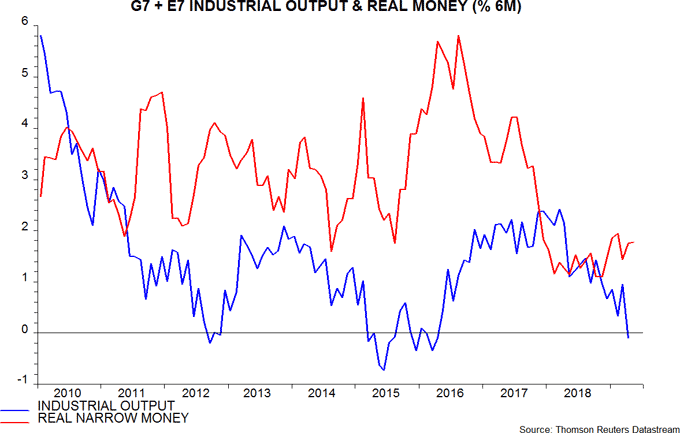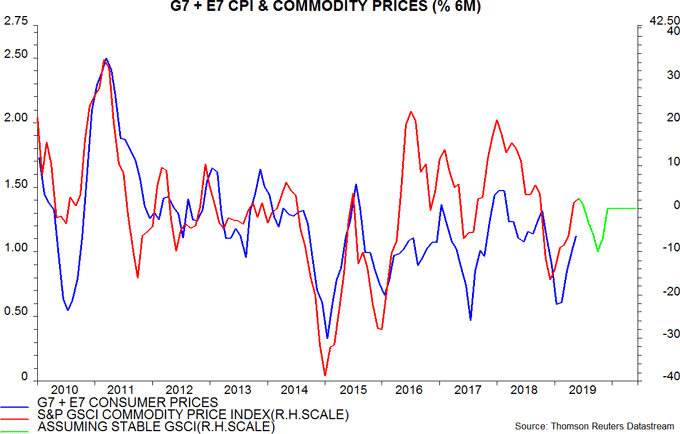Global money update: no recovery signal yet
Six-month growth of global nominal narrow money appears to have risen to a 16-month high in May but an increase in inflation resulted in little change in real money expansion, which continues to languish at a low level by post-GFC standards. Global economic momentum is expected to reach a trough in the third quarter and remain weak into early 2020.
The US, Japan, China, Brazil and India have released May monetary data, together accounting for two-thirds of the G7 plus E7 aggregate tracked here. Assuming unchanged growth in other countries, six-month nominal narrow money expansion is estimated to have reached its highest level since January 2018 – see first chart. The May rise was due to firmer growth in the US, Japan and China, which offset slowdowns in Brazil and India.

As expected, however, six-month consumer price inflation also increased further in May, reflecting a recovery in energy and other commodity prices in early 2019. Six-month real money expansion, therefore, is estimated to have been unchanged at 1.8% in May, below a recent high of 1.9% in March, though up from a low of 1.1% in October / November 2018.
Full April data confirm that the six-month change in G7 plus E7 industrial output turned negative – second chart. Based on the October / November low in real money growth, output momentum is expected to weaken further to a low around September, with limited revival into early 2020.

The judgement here remains that a rise in six-month real narrow money growth to 3% is needed to signal an economic recovery – a move through 3% occurred before all seven previous rebounds in global economic momentum since the 2008-09 recession.
An increase, on balance, appears likely. The recovery in nominal narrow money growth is hopeful and may extend in response to government bond yield declines and policy easing. Recent commodity price developments, meanwhile, suggest that inflation trends will shift from being a headwind to real money growth to a modest tailwind – third chart.


Reader Comments